‘The Butterfly Effect’ (2004): 20 Facts And Trivia About The Time Travel Thriller
“It has been said something as small as the flutter of a butterfly’s wing can ultimately cause a typhoon halfway around the world.”
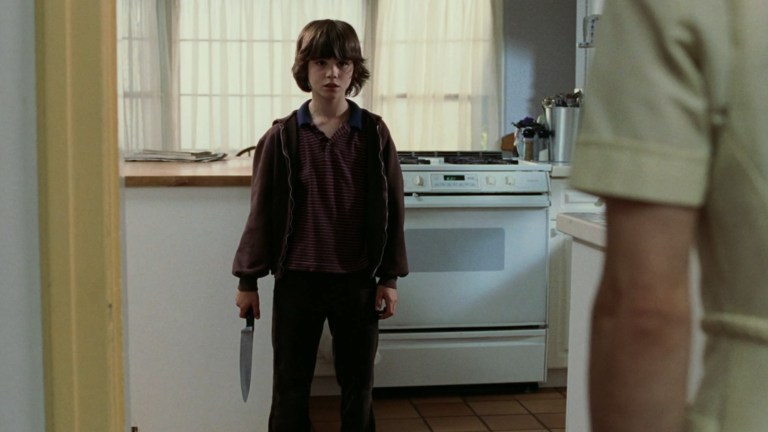
Evan has blackouts. He seems to miss stretches of time during important events, like an act of vandalism that maims innocent people, or an unfortunate incident in a basement. Parts of his childhood and teen years are missing, but his therapist suggests he writes everything down to help him remember. In college, he reads some of his hold journal allowed, which transports him back in time to the moments that he’d missed. And when he realizes he can change the present by what he does in the past, he quickly learns the far-reaching consequences that can have for everyone around him–including the girl that he loves.

The Butterfly Effect (2004) didn’t exactly get good reviews from critics when it came out, but that didn’t stop fans from loving the dark atmosphere, clever time travel dynamics, and stellar acting from Ashton Kutcher. It quickly became a fan favorite, and for good reason. Even though the sometimes forgotten ’00s film is now almost two decades old, it’s still a favorite among diehard fans. If you’re feeling nostalgic, read on for The Butterfly Effect facts and trivia, including a look at the much darker original ending you probably don’t know about.
Behind the Scenes of The Butterfly Effect

1. The title of the film is a nod to mathematician and meteorologist Edward Norton Lorenz’s contributions to chaos theory. He stated that the flap of a butterfly’s wings could have far reaching consequences that can’t be predicted. Or, to quote Jeff Goldblum’s Ian Malcom in Jurassic Park (1993):
It simply deals with unpredictability in complex systems. The shorthand is ‘the butterfly effect.’ A butterfly can flap its wings in Peking, and in Central Park, you get rain instead of sunshine.
Jurassic Park (1993)
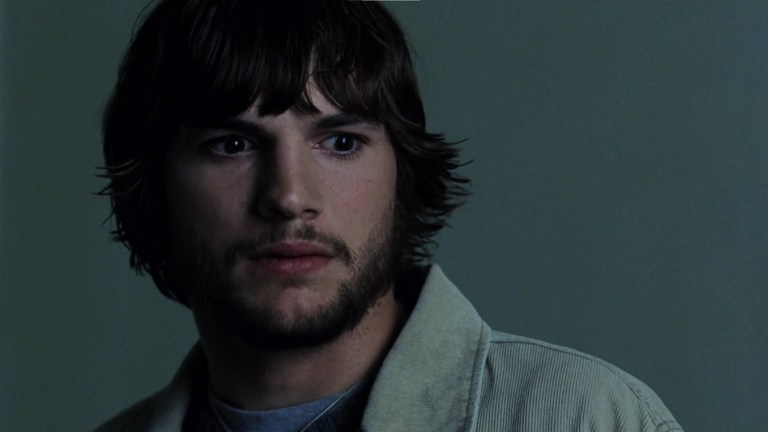
2. Ray Bradbury’s short story, “A Sound of Thunder” involves a time travel plot that gets foiled when someone steps on a butterfly in the past. Evan can be heard reading this story during one of the flashbacks.
3. When Evan wakes up in the sorority, you can see a Bradbury University pennant in the background. This is a reference to Ray Bradbury and his aforementioned short story.

4. The script had been floating around Hollywood for years without ever getting picked up. It took Ashton Kutcher signing on as an executive producer for The Butterfly Effect to finally get made.
5. Evan’s name is a play on words. When the T is moved to his first name, Evan Treborn becomes “Event Reborn,” alluding to the time travel and relived memories of the plot. The character had originally been named Chris Treborn which would be moved to “Christ Reborn.”

6. The mailbox prop had to be custom made to look exactly like the house it stood in front of. Because of this, they only had three made. They blew up each one and it wasn’t until the third take that the shot came out right.
7. Did you notice the lights flickering when teen Evan is attempting to relive his memories in a hypnotized state at his psychiatrist’s office? This was an accident on-set, but they decided to keep it in since it fit the scene.
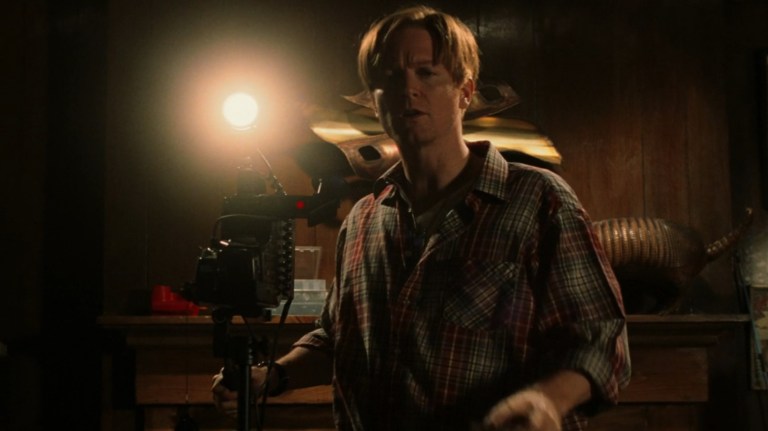
8. Eric Stolz’s long hair is so realistic that you might not have noticed that it was a wig. That’s because the wig was made out of his real hair, thus getting the natural red shade perfectly.
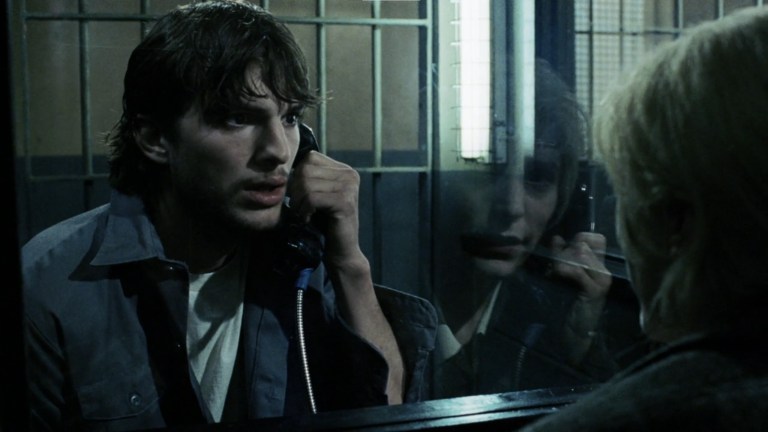
9. The prison scenes were filmed at Washington State Prison. Aside from the speaking roles, many of the background actors were real inmates at the prison.
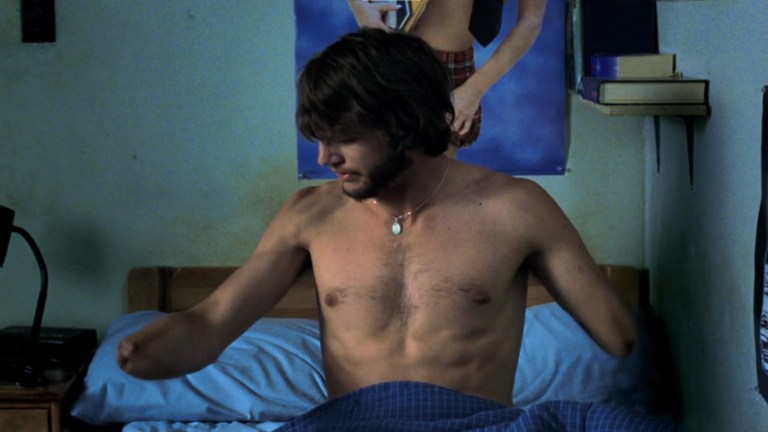
10. Production used some camera trickery to make it appear as though Evan had lost his arm in one of the alternate futures. They first filmed an empty bed. They then filmed the same shot with Ashton Kutcher wearing green gloves that could be removed in post.
11. In order for the character of Lenny to have a different look when he was traumatized versus when he was healthy and happy, actor Elden Henson filmed all of the Happy Lenny college scenes first, then gained 20 pounds for Traumatized Lenny.
The Alternate Endings
12. There were four endings filmed for The Butterfly Effect: One ending that would end up being scrapped and rereleased in the Director’s Cut, and the theatrical version with two additional variations.

13. The Butterfly Effect’s theatrical ending features Evan going back to when he first met Kayleigh, telling her that he’d kill her and her family if she stayed. This encouraged her and her brother to stay with their mom instead of their dad, thus making it so Evan and Kayleigh never become parts of each other’s lives. It isn’t until the very end that the two pass each other as adults on a New York City sidewalk. This is wear they filmed three slightly different endings:
- The official theatrical ending: Evan and Kayleigh pass each other and she seems to recognize him. They both keep walking, eluding that Evan wants to keep them apart.
- The happy ending: Evan and Kayleigh pass each other and she seems to recognize him. Evan introduces himself and asks her for coffee.
- The ambiguous ending: After Evan and Kayleigh pass each other, Evan turns back and begins to follow her before the film fades to black.
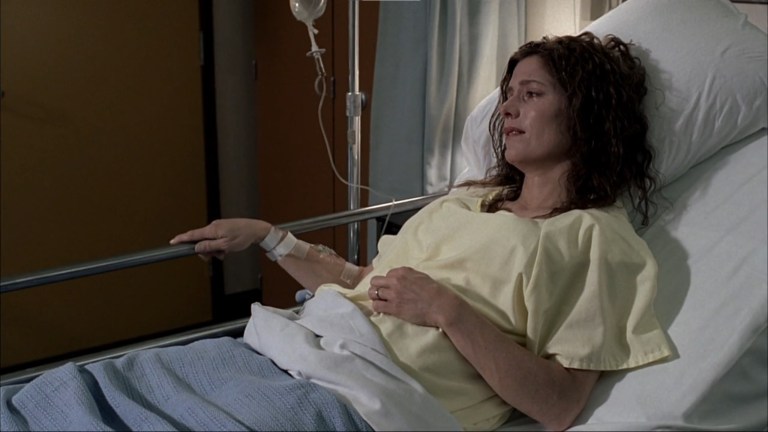
14. The ending they originally filmed was a lot darker. Rather than Evan going back to when he and Kayleigh first met, he watches a film of when his mother was pregnant. He goes back to when he was still in the womb, about to be born, and strangles himself with the umbilical cord. Without ever being born, the people in his life are left to live happy and fulfilling lives without him. Writer-director duo Eric Bress and J. Mackye Gruber preferred this ending, but the studio thought it was much too dark. Although they filmed a new ending, this original ending can be found in the Director’s Cut.
15. The Director’s Cut has a few small scenes added in addition to the original ending. A few of these scenes flesh out that ending, including Evan’s mom telling him that she’d had several stillbirths before he was born, and a scene where a palm reader tells Evan he has no lifeline.
16. You can watch both the theatrical version and the Director’s Cut on HBO Max if you want to see the two main endings.
Release and Response

17. The Butterfly Effect earned $96.8 million in worldwide box office revenue. With a budget of $13 million, this makes the thriller a commercial success.
18. The film was nominated for a 2004 Teen Choice Award for Choice Thriller Movie, but lost about to The Texas Chainsaw Massacre (2003).
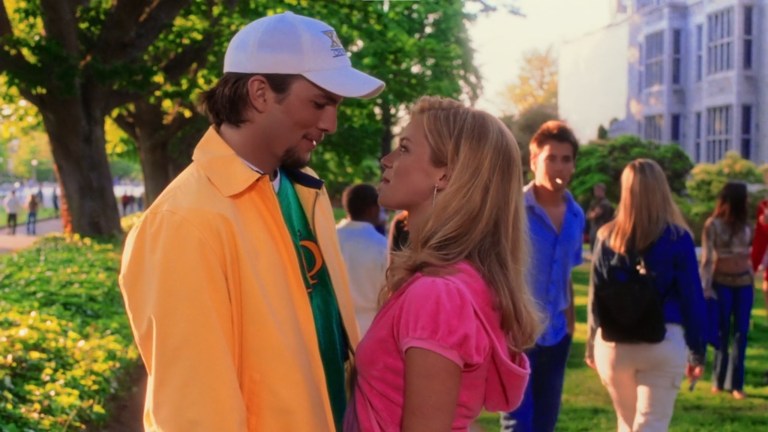
19. The Butterfly Effect has spawned two sequels. The Butterfly Effect 2 (2006) starred Eric Lively as Nick Larson as he goes through a similar time travel scenario. Aside from an easily missed newspaper clipping, there’s no connection with the original. The Butterfly Effect 3: Revelations (2009) had no connection to the first two films and had a different time travel mechanic. The sequels weren’t well-received.
20. Despite a 34% Rotten Tomatoes rating, The Butterfly Effect has been a hit among fans. It has an audience score of 81% and is regularly regarded as a high quality thriller and Ashton Kutcher’s best role.
